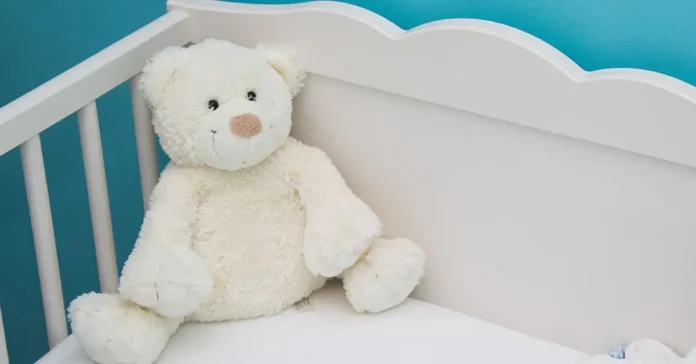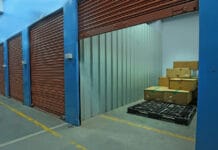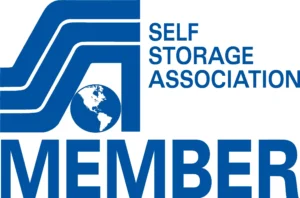Decluttering your life can be challenging but rewarding, especially when dealing with emotional clutter. The art of letting go involves making space for peace and simplicity by using effective storage options. Self-storage is a practical solution that provides a safe and secure place for your sentimental items, helping you keep your home organized and stress-free. With various storage options available, including box storage and utility lockers, you can easily find a solution that fits your needs and budget.
Self-storage facilities offer flexible and convenient options, making it easy to store items that you don’t use daily but still want to keep. Utility lockers are perfect for smaller items, while larger units can accommodate furniture and other belongings. By using self-storage, you can declutter your living space without the emotional strain of permanently parting with cherished possessions. Embrace the art of letting go and transform your home into a serene and clutter-free environment. Discover how self-storage can help you achieve a balanced and organized life, making room for new experiences and memories.
The Art of Letting Go – How to Start?
Starting the art of letting go begins with a clear plan. First, identify items in your home that you no longer need but still hold emotional value. Sort these items into categories, such as keepsakes, documents, and seasonal items. Next, choose the right storage options for each category. Self storage units are ideal for larger items, while box storage and utility lockers can hold smaller belongings.
As you pack, label each box clearly to make future access easier. Remember, the goal is to create more space in your home while keeping your cherished items safe. Embrace the process, and take it step by step. Letting go can be liberating, leading to a more organized and peaceful living space.
The Deep Dive into Emotional Clutter
Emotional clutter is more than just a term; it’s a state of mind. When our living spaces become overwhelmed with items, our minds follow suit. This clutter can manifest in various ways:
Stress: Overflowing drawers and closets induce anxiety, making daily tasks daunting.
Guilt: Holding onto gifts or inherited items out of obligation can lead to feelings of guilt.
Stagnation: Being surrounded by the past can prevent us from embracing the present and future.
Understanding emotional clutter is the first step towards addressing it. By recognizing its sources and effects, we can begin the process of decluttering.
The Liberating Benefits of Letting Go
Releasing items, especially those with sentimental value, can be challenging. However, the benefits are manifold:
Mental clarity: A tidy space often mirrors a tidy mind, leading to better focus, creativity, and overall mental well-being.
Increased energy: With fewer items to manage, there’s less time spent on cleaning, organizing, and searching.
Enhanced well-being: The act of letting go can be therapeutic, leading to feelings of lightness, accomplishment, and even relief from past traumas.
Space for new memories: By letting go of the old, we make room for new experiences, adventures, and memories.
Self Storage: More Than Just a Space
Self storage facilities offer more than just a physical space to store items. They provide a transitional space, a buffer that allows individuals to make decisions without pressure:
A Breathing Room: Instead of making hasty decisions, items can be stored away until one is ready to decide their fate.
Flexibility: Items can be retrieved, replaced, or discarded at one’s own pace.
Safety: Valuable or fragile items are kept in a secure environment, free from potential home accidents.
Cost-effective: Instead of renting a larger living space, self storage offers an affordable solution to manage excess items.
A Step-by-Step Guide to Using Self Storage for Emotional Decluttering
1. Inventory your items: Dedicate time to go through your belongings. Create a list of items and their emotional significance.
2. Categorize: Group items based on their importance, frequency of use, and emotional weight.
3. Choose the right storage: Based on the volume and type of items, select an appropriate storage size.
4. Decide on a storage duration: While some items might need short-term storage, others might benefit from longer durations.
5. Regularly revisit: Make it a habit to check your storage unit. This helps in reassessing your emotional ties and making informed decisions.
Mastering the “Art of Letting Go”
The “Art of Letting Go” is a continuous journey of self-discovery and growth. It’s about:
Self-awareness: Recognizing and understanding our emotional attachments.
Acceptance: Realizing that it’s okay to outgrow certain items or memories.
Growth: Embracing change and making room for new experiences.
Mindfulness: Being present in the moment and appreciating what we have.
Stories from the Heart: Real-life Experiences
Jane, a 45-year-old teacher, shared her experience of using self storage during her move. “I realized I was holding onto items from my childhood, college days, and even past relationships. Using self storage gave me the time and space to decide what truly mattered.”
Mark, a 30-year-old artist, found solace in self storage when downsizing his studio. “It was hard parting with old artworks, but storing them helped me realize which pieces truly resonated with my journey.”
Tips for a Successful Decluttering Process
Start small: Begin with a single drawer or shelf.
Set a timer: Dedicate a specific amount of time each day or week to decluttering.
Seek support: Invite a friend or family member to help, or consider hiring a professional organizer.
Celebrate small wins: Every item released is a step towards a clutter-free life.
The Psychology Behind Holding On
Often, our reluctance to let go of items stems from deep-seated psychological reasons:
Fear of the Future: Holding onto items can be a way of seeking comfort in the familiar, especially when the future seems uncertain.
Reliving the Past: Some items serve as a bridge to our past, allowing us to revisit cherished memories.
Perceived Value: We sometimes hold onto items because we believe they might be valuable in the future, both emotionally and monetarily.
Understanding these underlying reasons can help in the decluttering process, making it easier to part with items.
The Environmental Impact of Decluttering
When we talk about decluttering, it’s also essential to consider the environmental aspect:
Recycling: Ensure that items that can be recycled don’t end up in landfills.
Donating: Items in good condition can find a new home and serve someone else.
Selling: Platforms like eBay or local garage sales can be a way to declutter and earn some money.
By being environmentally conscious, the decluttering process becomes not just a personal journey but also a contribution to a larger cause.
The Role of Digital Clutter
In today’s digital age, clutter isn’t just physical. Digital clutter, like endless emails, files, and photos, can be just as overwhelming:
Regular Clean-ups: Schedule monthly or quarterly digital decluttering sessions.
Cloud Storage: Use cloud storage solutions to keep essential files and free up device space.
Unsubscribe: Reduce email clutter by unsubscribing from newsletters or promotions you no longer read.
Addressing digital clutter is crucial in achieving a holistic decluttered life.
The Spiritual Aspect of Letting Go
Many cultures and spiritual practices emphasize the importance of minimalism and letting go:
Buddhism: Teaches detachment from material possessions as a path to enlightenment.
Minimalist Living: A lifestyle choice that emphasizes living with less and finding joy in simplicity.
Mindful Consumption: Being aware of what we bring into our lives and ensuring it aligns with our values.
Exploring the spiritual aspect can provide a deeper understanding and motivation for the “Art of Letting Go.”
Overcoming Challenges in the Decluttering Process
Decluttering is not always a smooth journey. Some common challenges include:
Emotional Resistance: Parting with sentimental items can be emotionally taxing.
Decision Fatigue: Constantly deciding what to keep or discard can be exhausting.
Lack of Time: Finding dedicated time for decluttering can be a challenge in our busy lives.
However, with persistence, support, and the right tools, these challenges can be overcome.
Final Thoughts: The Continuous Journey of Letting Go
The “Art of Letting Go” is not a one-time event but a continuous journey. As we evolve, grow, and change, so will our attachments and needs. With every item we let go of, we take a step towards a more mindful, intentional, and fulfilling life. Embrace the journey, cherish the memories, but don’t let them hold you back.
With a deeper understanding of the reasons behind our attachments, the environmental and digital implications of decluttering, and the spiritual perspectives on letting go, we can navigate the journey of decluttering with more insight and purpose. The “Art of Letting Go” is truly a transformative practice that paves the way for a more enriching life experience.
FAQs on Art of Letting Go
A: Emotional clutter refers to items that hold sentimental value but create mental and physical stress.
A: Self-storage provides a safe place to store sentimental items, allowing you to declutter your living space without discarding memories.
A: It can be, but start by evaluating the importance and frequency of use for each item. Store items that you don’t need daily but want to keep.
A: Yes, reducing physical clutter can help clear your mind and reduce stress, making you feel more at peace.
A: Begin by sorting through your belongings, deciding which items you want to keep, store, or let go of, one step at a time.
A: Yes, most self-storage facilities offer easy access to your stored items, allowing you to retrieve them whenever you need.
A: Yes, self-storage units are typically secure, with features like surveillance cameras, locks, and controlled access to ensure your items are protected.
A: Consider the size of the unit, location, security features, and cost. Visit the facility to ensure it meets your needs.
A: Costs vary based on unit size, location, and additional features. Most facilities offer flexible payment options to suit your budget.
A: The duration depends on your personal needs. Some use storage for short-term transitions, while others keep items stored long-term for ongoing peace of mind.







